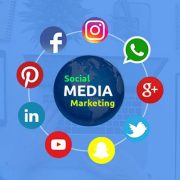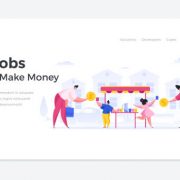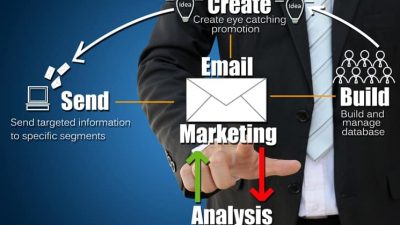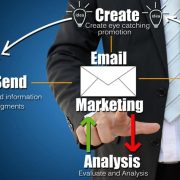This is why you need a website that represents your business. The internet is a huge factor in the existence of websites. A website that is well designed can bring many benefits to a business. Therefore, it is important to build a website that is better.
The Web Design Process
It is important to choose a business address that is easily identifiable by clients.
The next step is to find a hosting company that will host your website. This will usually cost you some money. You may have to do some research if you are tight on money in order to get the best deal.
A professional web developer is required to help you build your website. Google will give you a list with web development companies.
Killer Web Design Tips
These are some web design tips to help you create a beautiful website for your client or business.
1. Your website should be responsive
Accessing the internet today is possible via many devices, including tablets and smartphones. It is often easier and more convenient for people to access the internet via their handheld devices. You should design a website that is accessible from any handheld device.
This is something you need to make sure your website is accessible from all devices. You should redesign an existing website that’s not accessible on handheld devices. You can also create a new website.
Consider the mobile users who will be visiting your website via mobile devices. Google recommends that all websites be responsive. This is why you should implement it when building a website, as it will save you the hassle of redesigning it every time.
Designers should also take advantage of large screens with higher resolution.
To meet changing user expectations, the web browser landscape is constantly changing. Web designers began creating mobile versions for their websites as more people wanted to surf the web from their smartphones as well as desktop computers.
It is impossible to create different versions of websites for each device because there are so many screen resolutions and sizes. This is the goal of responsive web design.
What makes responsive design so special?
Responsive design can be applied to many different ideas and techniques. We will discuss different parts of each solution.
i). Fluid Grids
Designers used to use “liquid layout”, which expands with each page, in the past. The layout was created based on either rigid pixels or arbitrary percentage values.
Fluid grids have replaced the liquid layout. They are based on proportions. If the layout is too small or too large for a handheld device, it will resize its elements in proportion to each other.
The fluid grid has one problem: the width of the design begins to shrink when the browser’s width is too small. This problem is solved by designers using media queries.
ii). Media Queries
CSS3 media queries are the second component of responsive design. Fortunately, most modern browsers can support them. CSS3 media queries enable the collection of data from site visitors, which can be used to conditionally apply CSS styles.
In this instance, we are interested the min-width media function that allows application of unique CSS styles in browser windows that drop below a specified width.
2. Make your homepage informative
The homepage is the most common entry point to websites. It should contain detailed information about the potential benefits that customers will receive from the company’s products, services, or content. It will be engaging and will help visitors navigate the website.
How to Create a Great Website
-User-Friendly Interface
An easy-to-use interface makes it easier for visitors to find what they are looking for on your site. This will encourage your visitors to make the most of your website.
Multimedia -Include
Use multimedia, such as videos, gifs and compelling images, to provide information about your company, including any freebies, products or services, and their history. This popular trend has proven to be beneficial.
-Include Real Contacts
Make sure to include up-to-date contact information that leads can use for you. It is a mistake to not give leads the opportunity to reach you.
Make Great Headlines
Your headlines should be clear and concise. This will ensure that visitors don’t waste their time reading on.
-Mention Benefits
It is easier to list the benefits that visitors will receive than the features of your products or services. Mention the benefits your products and/or services will bring to their lives.
Your Homepage is a Gateway
Your homepage is a gateway to all your content and offers. It is important to pay attention to your homepage’s free offers, products, services, benefits, and content. Then, think about you.
-Social Proof
You can include testimonials, case studies, and videos from other people or companies to show how your product/service will benefit them.
3. Create user-friendly landing pages
Landing Pages offer a more targeted approach than the homepage. They speak to specific audiences and are therefore more effective. Your website should be designed so that people searching for information about a product can land on the page that is dedicated to it. Research shows that landing pages convert better than homepages.
How to Create a Great Landing Page
-Actionable Headline
Create a headline that tells the visitor what they will find on the landing pages and how to access it. The headline should be actionable or descriptive.
-Create content that is tailored to the sales cycle stage
Landing pages can be stage-based, just like content marketing. People have different needs and access landing pages depending on where they are in the sales cycle. Therefore, it is important to create content for each individual.
We recommend a bulleted listing with information about the benefits your business offers for top-of-the-funnel prospects. We recommend customer testimonials and case studies for middle-of-funnel prospects. Bottom of the funnel prospects should be offered a “Start Free Trial” and “Request a Demo” option.
-Make Page Scanned
The internet is filled with irrelevant information so most people just surf the web looking for information. This is true for both landing pages as well as your websites.
These are some facts about landing page visitors
- i) They scan the content but not all of it.
- ii) More attention is paid to the content at the top and left sides of the page.
iii. Most people don’t read more that 28% of what you have on your site.
Your main idea should be included in the first paragraphs of any text or paragraphs on your landing page. You should also group your content and create clear headings to ensure that visitors can easily understand the main idea.
Conversion made easier
Avoid too many steps in the conversion process as it will cause most visitors to abandon you before they reach the final stage. We recommend landing pages with a minimum of four fields, and we also recommend forms that are short. Avoid collecting information from leads who jump through hoops.
Good Call to Action
A call to action is crucial for conversion. It must be compelling. It should not be an afterthought.
Your call to action should be:
- i) Locatable.
- ii) Informs visitors about the benefits they will receive instead of telling them what to do.
iii. Uses the first-person language.
Numerous studies have shown that CTAs performed better in the first person.
-Engage Converts
Converting visitors to customers is only half the battle. Converts must be engaged by you providing additional value.
A rich and engaging “Thank You Page” should be included with links to rich content, case studies, videos and other information.
-Testing
It is very discourageable to guess which content will be most popular with your audience. Make sure you test and verify what works.
We recommend A/B testing data. Use a marketing automation tool to test elements such as colours and calls to action.
-Consistency
Follow these steps to get the best results for your landing pages.
4. Make your website social media friendly
Social media marketing is a trend in digital marketing. One way to improve it, is by making your website “socially media friendly”.
There are many social media platforms, including Facebook, Twitter and Google+. Social media can increase traffic to websites, improve search engine rankings, and boost conversions. Businesses can reap the many benefits of a social media-friendly website.
How to make your website social media friendly
-Include social media profiles links on your website
Add links to your social media profiles to encourage website visitors to connect to you via social media. You will allow them to stay up-to-date with the latest news, offers, and products. Customers will trust your business more if they follow you on social media.
You can add social media icons in the footer, along the top and in the sidebar.
-Show social proof
Social proof, such as screenshots and share counts, can help you establish credibility. Although it sounds absurd, there are numerous studies that back this up.
People will encourage others to share your content on social media if they see it being shared. People tend to follow the crowd, so if they see others sharing your content, they will be more inclined to believe that it is valuable.
Make it easy for visitors to share your content
Add social buttons to your website so that visitors can easily share content. You should ensure that the buttons feature is available on as many social networks possible.
You don’t have to create content just to fill your website. Make sure that the content you create and post on your site is valuable to viewers or readers.
There are many ways to add social sharing buttons to your website.
-Add Social Media Widget
Social media widgets can be used to display social media feeds. Only add widgets to platforms that you are interested in updating.
It’s great to highlight your active Pinterest, Facebook and Instagram accounts. This is a simple way to promote your content and add visual elements.
Test your Handheld Devices
It is not possible to make a responsive mobile website that will work well on mobile devices. It is only possible to test it.
Other aspects to consider include the ability to use mobile devices for sharing content via sharing buttons.
-Optimise Content for Platforms
Social media is visual in most cases. Make sure that featured images appear when people share your content. You can either change the image or delete it if you feel it isn’t appropriate for your content.
Create Content That Connects With Your Audience
Your audience will not share your content if it doesn’t connect with them. People will share content that they consider share-worthy, no matter how great it is.
How many people share your content will tell you how popular it is. Consider focusing on topics that receive more shares.
5. Improve the navigation of your website
Although most websites offer some type of navigation, not every website has a good one. Most website navigations are created by web designers who have little to no marketing experience. They are unable to create a website for clients.
A website with good navigation will retain more customers, keep them engaged, and drive them through the conversion funnel.
Strong navigation makes it easy for visitors to find the information they are looking for. It makes it easier for search engines index your website’s information efficiently and effectively.
Poor navigation can cause visitors to leave quickly if they don’t find the information they need. Visitors who don’t find interesting content won’t convert enough.
Improved Site Navigation
-Consistency
You should make sure your navigation is consistent from one page to the next, unless you have to. Visitors will find your site simple to use and be able to find the information they need quickly.
-Divide Categories Well
Visually and clearly define sub-categories and categories. Regardless of whether subcategories are linked, visually categorize headings should be distinguished from subcategories.
Make Navigation Elements Clickable Links
Your navigation may require multiple categorical divisions. All heading elements must be clickable links in this instance.
Use Genuine Navigation Titles
Before they click on a link, let visitors know the contents of a page. Avoid confusing or being cryptic in your navigation text. This will cause visitors to leave the site. This is true for both the main navigation link and internal text links.
-Include an ALT text for Every Clickable Image
Every clickable image should have ALT text. To ensure that visitors are able to identify the link regardless of how they view it, include the ALT attribute and descriptive text.
-Include a Working search feature
In-search site features should be included in search results pages. It should show relevant results, correct misspellings and produce results that you don’t already have, while also showing you related products and services.
6. Use relevant and informative content
No matter how advanced your website is, if you don’t include the right content, you might not be able to convert enough visitors.
Customers should be able to explain the benefits of using your products. Remember to mention your organization’s past and key achievements. Include a photo of the founders and management if possible.
A page with testimonials and case studies would be a great idea. These endorsements from third parties can greatly boost your business, according to studies. Trust is a key factor in customers buying from businesses they trust.
-Update your Content
People make the common error of not keeping their content current and relevant. Keep your site and content updated regularly, adding new information and removing outdated information. Site visitors may not be able to find the important information if it is hidden.
-Excludes Industry Jargon
Even if you are a professional business, avoid words and phrases that visitors may not understand. Make sure visitors understand your language.
-Use Conversational English as a Language
Your hard grammar is not something anyone wants to see so avoid writing website content that sounds like a termpaper. As if you were speaking directly to your visitor, write as though. It is best to use the second person (including “we” or “you”), but you can also use contractions.
It is better to use a casual, friendly tone than formal, corporate speak.















Comments